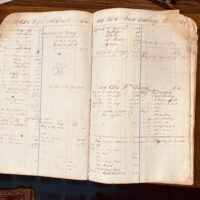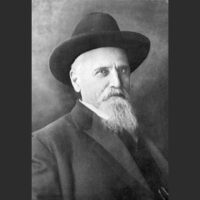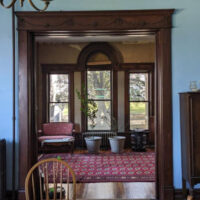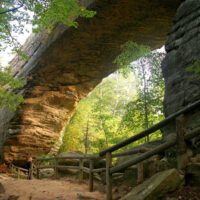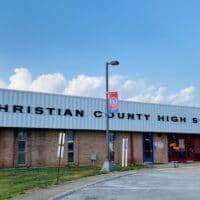A photographer sets his camera up in the middle of the street. The street is bathed in bright lights — strung above and across the facades of buildings. Cars line both sides of the street, but not a person is in sight.
The photographer releases the shutter. CLICK!
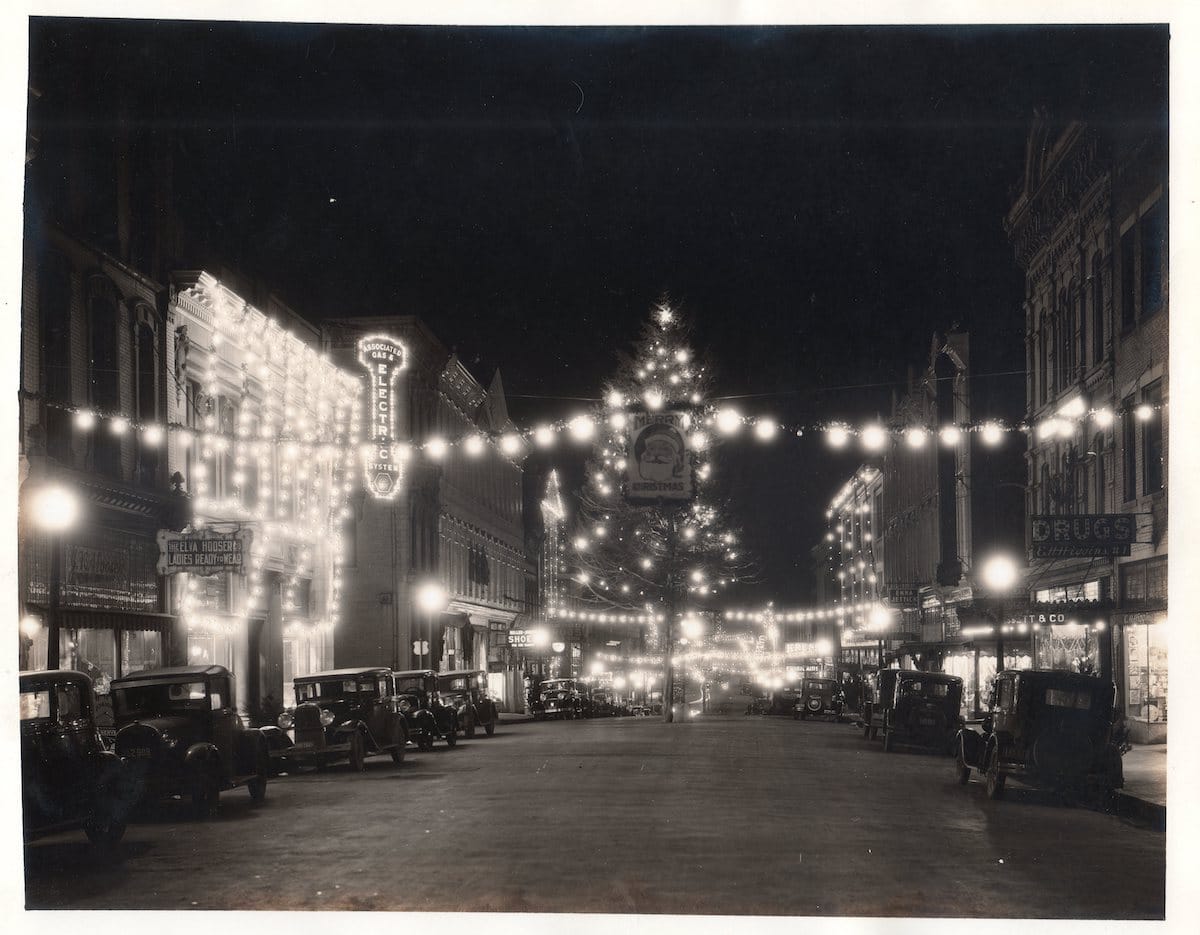
A quiet moment is captured.
Some images have the power to transport me to a different time, to a different place. This photograph is one of those images. Lucky for me, I only need to make the journey to a different time because the place itself is familiar. It is a place I see almost daily. It is a place right around the corner from where I am sitting right now. It is a place that all who know Hoptown can recognize.
The year was 1932, and the photographer was L.D. Martin, owner of Martin Studio. This holiday season was the first time the city and its downtown merchants committed to decorating the streets and buildings with lights. These large, twinkling beacons shined toward the hope of a brighter year ahead. The country had endured the Great Depression for three years, but hope abounded with the recent election of Franklin D. Roosevelt. The New Deal was just around the corner.
Looking down the middle of Main Street, this photograph shows the intersection of Seventh Street and the cluster of businesses, shops and offices that enticed folks into downtown from near and far. Down the east side of the street, we can see J.K Hooser’s Tailor shop and the Elva Hooser Clothing Co. promoting ladies’ ready-to-wear frocks. The Associated Gas and Electric Company beams on the corner and shows itself appropriately glowing for the holidays. As we cross Seventh Street, we see the former Bank of Hopkinsville building followed by the Thompson Building. At the time, the Thompson Building housed professional offices, a billiard parlor, a shoe store and a drug store.

Twenty years prior to this picture, Edgar Cayce ran a photography studio and gave psychic readings on its second floor. The Thompson Building burned in 1984. Further down and shining with lights we see old Planters Bank, Jordan’s Furniture Store, and other shops on the site of today’s Hopkinsville Municipal Center.
On the west side of the street, Higgin’s Drug Store and Bassett & Co. Dry Goods stand north of Seventh Street. If you squint, you can just make out their fanciful storefronts and awning decorations. Wall & McGowan Clothing Store, Cornette’s booksellers, and the large J.H. Anderson Co. department store draws our gaze down the hill toward Ninth Street and beyond.
The tradition of decorating downtown with lights started decades before this picture was taken. In 1915, Hopkinsville saw its first Christmas tree decorated with electric lights. The tree was specially planted in Peace Park — the site of destruction just eight years before when Night Riders burned a tobacco warehouse to the ground. Local electrician Tom Baugh created the magical scene by stringing together electric light bulbs and dipping them individually in a variety of paint colors. A crowd gathered to sing Christmas carols and to admire the shining scene.
Community Christmas trees commanded a place of prominence in the city from this time forward. The most conspicuous were large cedar trees set at main intersections downtown — as you see in this picture. Each tree was decorated with tinsel and lights and caused great impediments to traffic. This tradition started in 1926, but it was abandoned in 1937 for safety reasons. Since then, the community tree has stood in Virginia Park, at the Lackey Municipal Center on North Main Street, in Little River Park, and now on the corner of Ninth and Bethel streets. In 1974, the city chose to forego the official tree lighting due to the national energy crisis.
Hopkinsville’s Main Street in 1932 also witnessed the first community Christmas parade as we know them. The parade featured the requisite floats, bands, and clowns, and Santa Claus made his grand appearance aboard the city’s shiny American LaFrance fire truck. But a true sign of the times was the dramatic appearance of two men: one dressed as “Old Man Depression” in tattered rags and the other as a well-dressed businessman. The businessman cracked a whip to hurry the old man along — driving depression off the street and welcoming prosperity.
Unlike the joy and action that a parade brings, this photograph feels different to me. It feels like a breath to me. A beautiful breath during a time of so much coming and going, so much meeting and greeting, so much hollying and jollying. The mood of this image offers something different. It gives me just a glimpse — as short as the click of a shutter — of the warmth and glow of the holiday season. To me, this picture shows the beauty and grace of our downtown, but it also shows the quiet anticipation of something else, something bigger and more important.
I imagine people pouring out of the shops and to their cars in the seconds after this picture was taken. Folks bundled up and heavy-laden with packages and gifts for friends and family and hollering holiday greetings from one side of Main Street to the other. The moment remains only as a memory, captured in this frame. And thanks to the vast collection of photographs that William T. Turner has gathered and saved for decades, this moment survives for us.
I hope this solitary image reminds you of the quietness and beauty that exist this time of year and encourages you to take a moment to breathe and to enjoy it all.
